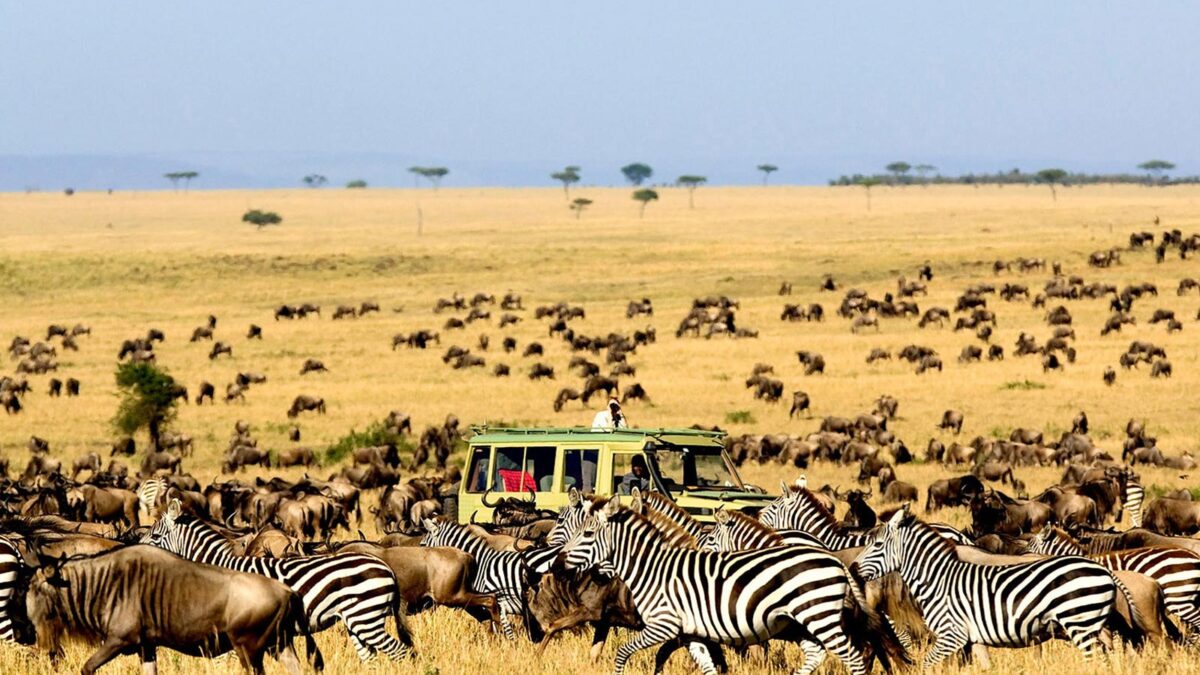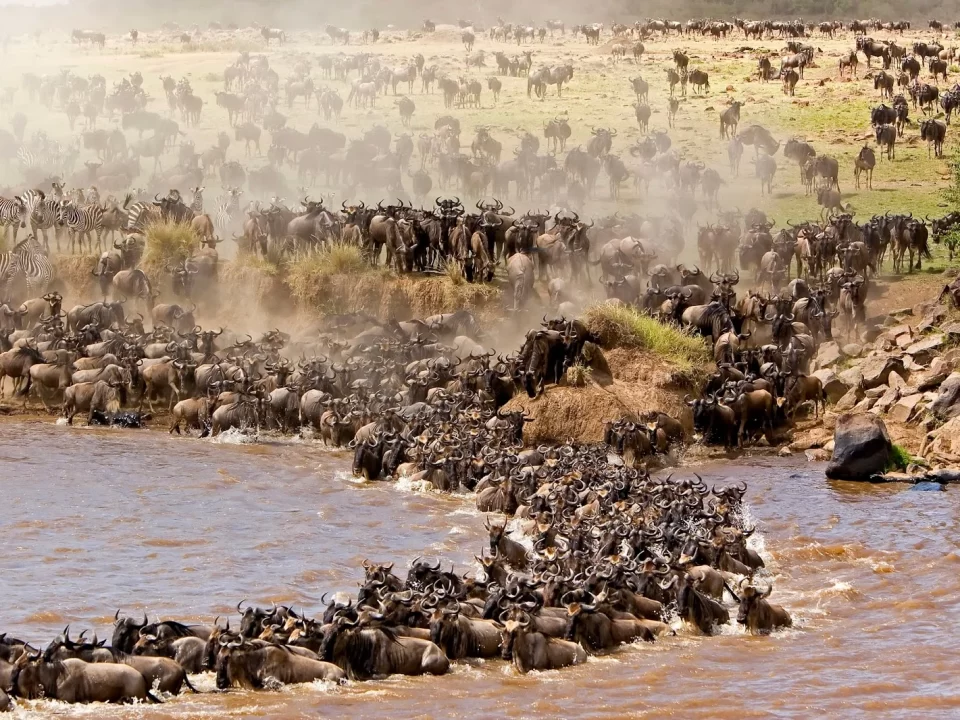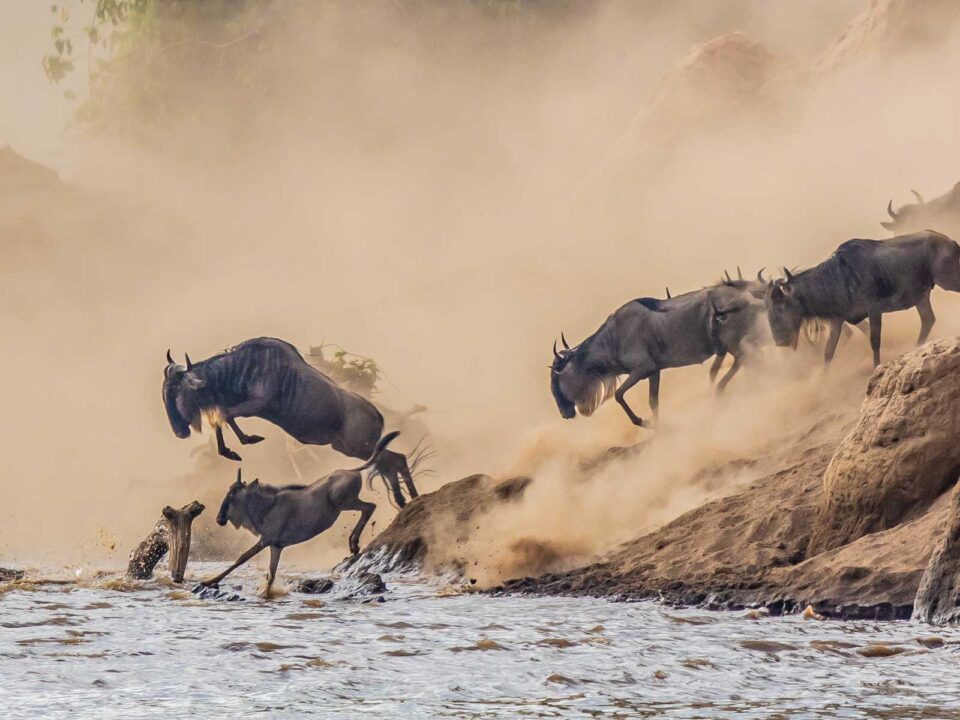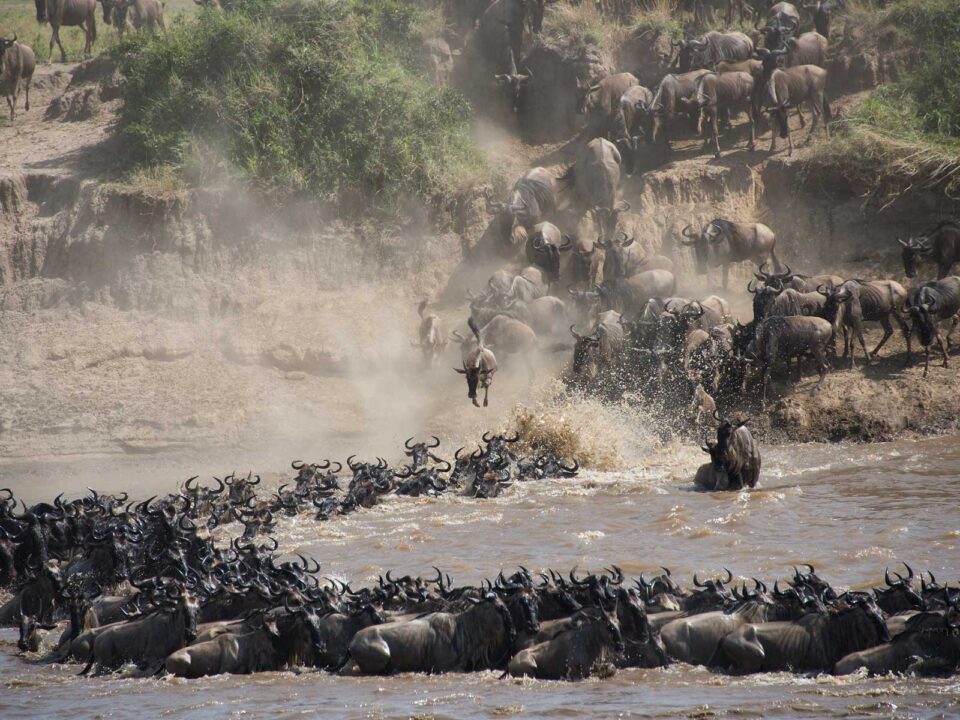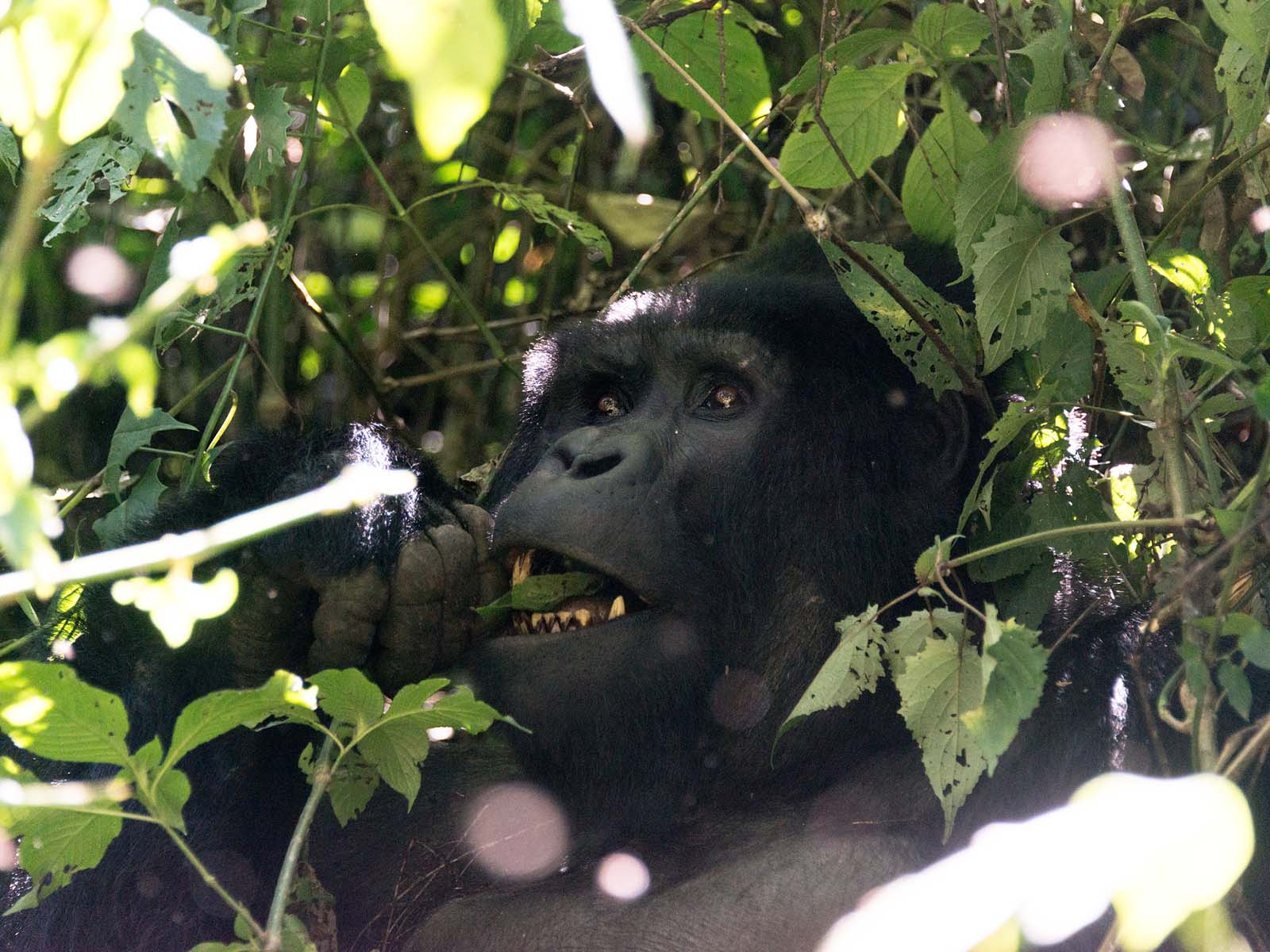
Filming in the Buhoma Region
January 17, 2024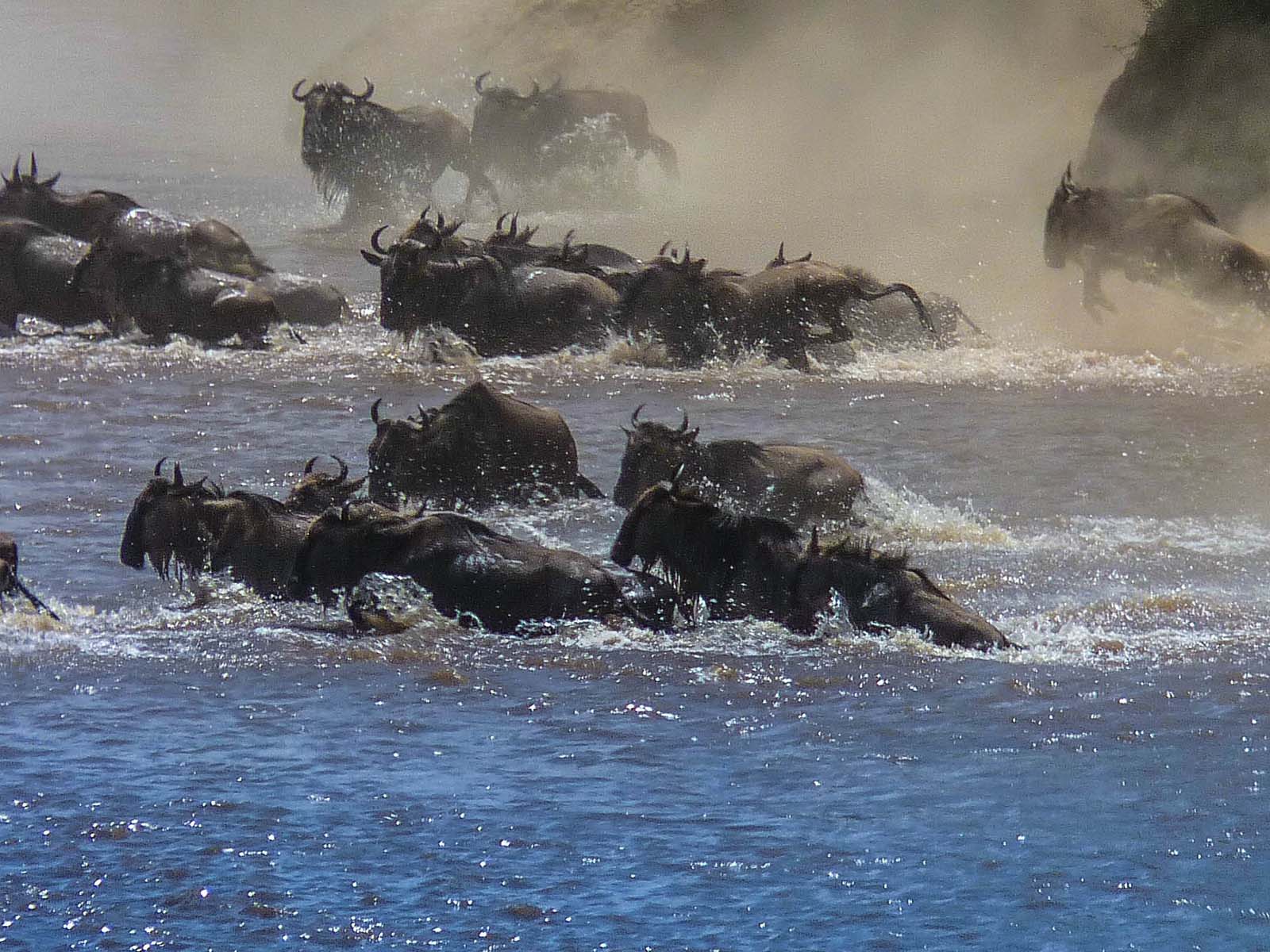
Planning a Great Wildebeest Migration Safari in Africa
January 20, 2024Best Time to Witness Serengeti Wildebeest Migration
Best Time to witness Serengeti Wildebeest Migration — Established in 1952, the Serengeti National Park in Tanzania stands as a testament to the awe-inspiring wonders of the natural world. Its claim to fame lies in hosting the most magnificent wildlife spectacle on Earth—the grand migration of wildebeest and zebra. Amidst the vast expanse, a resident population of lions, cheetahs, elephants, giraffes, and a myriad of bird species further enrich the park’s biodiversity. Accommodations range from luxurious lodges to mobile camps, providing a diverse range of options for visitors. Covering an impressive 5,700 square miles (14,763 sq km)—larger than the state of Connecticut—the park sees only a modest number of vehicles meandering through its breathtaking landscapes.
Delving into the Park’s Divisions
The Serengeti National Park unfolds across three distinct sections. The popular southern/central part, known as Seronera Valley, resonates with the Maasai designation of the “Serengeti”—the land of endless plains. Its classic savannah, adorned with acacias, serves as a canvas for an abundance of wildlife. The western corridor, defined by the Grumeti River, boasts more wooded areas and dense bush. In the north lies the Lobo area, meeting Kenya’s Masai Mara Reserve and standing as the least visited section, offering a more secluded exploration.
Embarking on the Wildebeest Migration
The Wildebeest Migration, a year-round spectacle, unfolds in three distinct stages between the Masai Mara and the Serengeti. Depending on your interests, choosing the optimal time to travel becomes crucial.
February to March: Witnessing New Life
As January unfolds, wildebeest cows begin arriving in preparation for giving birth. The months of February and March mark the commencement of new life in the wildebeest migration circle. Against the backdrop of the Ndutu plains, 7,000-8,000 wildebeest calves are born amidst an environment teeming with intense predator presence. Those seeking to witness this spectacle must plan their travels between February and March.
May to June: The Mating Season
By April, wildebeest calves gain strength, and the herds start their journey towards the western corridor and the central Ngorongoro conservation area. During this period, the cows are ready for mating, presenting another captivating stage of the wildebeest migration.
July to October: The River Crossing Extravaganza
Towards the end of June, the wildebeest reach the shores of the Mara River, setting the stage for the dramatic river crossing—a breathtaking highlight and one of the greatest wildlife spectacles in Africa. Travelers seeking this mesmerizing river crossing experience must plan their visit between July and October, with the Masai Mara reaching its peak during this period.
Our Expert Recommendation for the Ultimate Experience
For the best wildlife viewing, our seasoned adventure safari experts recommend traveling to the Serengeti between February and March. Meanwhile, for those eagerly anticipating the wildebeest Mara River crossing, the ideal timeframe spans from July to October. Embark on an unforgettable journey into the heart of nature’s grandeur during these optimal periods, and witness the magic of the Serengeti Wildebeest Migration in all its glory.

